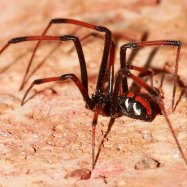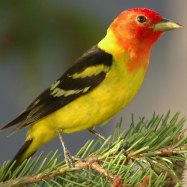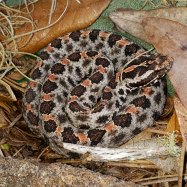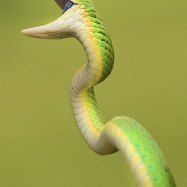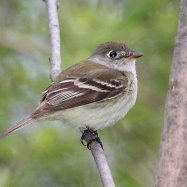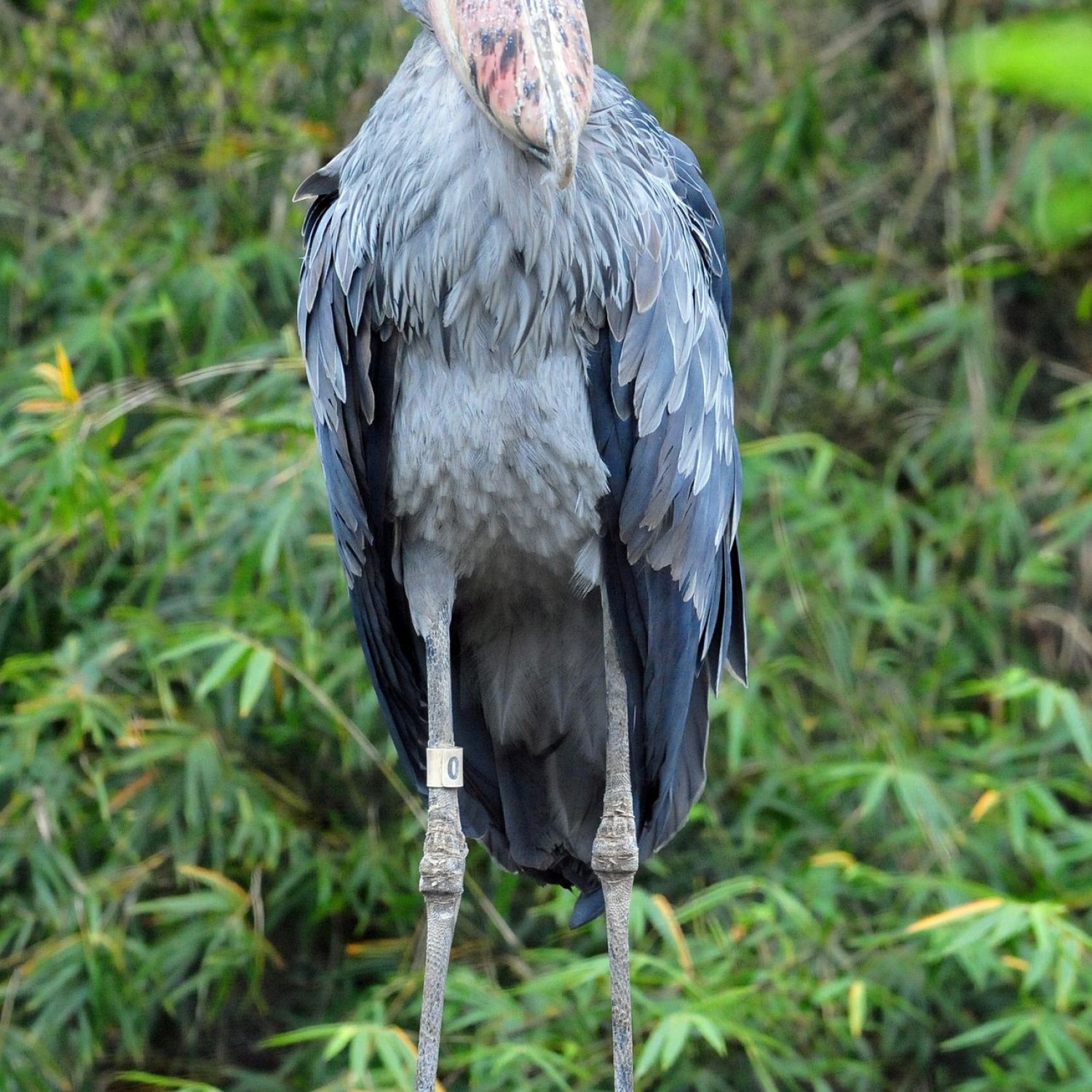
Shoebill Stork
110-140 cm (43-55 inches)
The Shoebill Stork, native to Eastern Africa, is a magnificent bird with a unique body shape. Standing at 110-140 cm tall with long legs and a massive bill, it is a sight to behold. Belonging to the family Balaenicipitidae, this majestic creature is a must-see for any wildlife enthusiast. With its striking appearance and impressive size, the Shoebill Stork is truly a symbol of the beauty and diversity of our natural world. Keep an eye out for this fascinating bird on your next trip to Eastern Africa!
Animal Details Summary:
Common Name: Shoebill Stork
Kingdom: Animalia
Habitat: Swamps, marshes, and wetlands
The Majestic Shoebill Stork: A Rare and Enigmatic Bird of Eastern Africa
When one thinks of Africa, images of majestic lions, powerful elephants, and graceful giraffes often come to mind. But there is one creature that often goes unnoticed, overshadowed by the larger and more well-known animals of the African savannah. This bird may not be as famous as the "Big Five," but its unique appearance and behavior make it a highly interesting and enigmatic species – the Shoebill Stork.Scientifically known as Balaeniceps rex, the Shoebill Stork is commonly referred to as simply "shoebill" due to its massive bill resembling a shoe Shoebill Stork. This large, wading bird belongs to the kingdom Animalia and the phylum Chordata, making it a distant relative of other winged creatures such as penguins and seagulls. However, its classification as an avian is much more specific – it belongs to the order Pelecaniformes, which also includes pelicans, herons, and other storks. The family Balaenicipitidae is comprised of just one species – the Shoebill Stork – making it an incredibly unique and rare bird.
The shoebill can only be found in a specific region of Eastern Africa, mainly in Sudan, Uganda, and Zambia. Its preferred habitat is in swamps, marshes, and wetlands, where it can hunt for its elusive prey. Unlike other storks that use their long bills to catch fish while wading in shallow waters, the shoebill has a different feeding method. It sits and waits patiently, scanning the water for movements of fish, frogs, and other small prey. Once it spots its target, it swiftly strikes with its sharp bill, which has been recorded to reach speeds of up to 35 miles per hour.
While its specialized hunting technique may be impressive, it is the shoebill's appearance that truly sets it apart from other birds Shichi. This avian stands tall at 110-140 cm and is considered one of the largest birds in Africa. Its long legs allow it to wade through shallow water, while its massive, sturdy bill helps it to balance and navigate through the marshy terrain. Its body is gray-blue in color, with contrasting black and white accents on its wings and tail feathers, making it easy to spot against the lush green backdrop of its natural habitat.
The shoebill has a unique body shape, with a large head and a thick neck that allows it to easily manipulate its bill when hunting. Interestingly, this bird's mouth is not only for catching prey but also serves as a cooling mechanism. Often, you can find shoebills gaping open their bills to regulate their body temperature, especially during hot African days.
But what truly makes the shoebill stork a wonder of nature is its massive bill. Measuring at an average of 25 cm in length, its bill is designed for crushing and breaking through the tough exteriors of its prey, such as large catfish, frogs, and snakes. Its powerful jaw muscles have been known to exert a force of up to 130 pounds per square inch, making it one of the strongest beaks among birds.
Apart from its impressive hunting abilities, the shoebill also has a peculiar way of communicating with its fellow birds. It is known to make a low grunting sound, which can often be heard while in flight or during foraging. This sound is believed to be a form of communication between the birds, especially during breeding season.
Talking about breeding, the Shoebill Stork has a unique courtship ritual that involves a series of bowing head movements, bill tapping, and synchronized displays of vocalizations. They usually nest on the ground, and once they mate, the female lays 1-3 eggs, of which one usually survives. The chick hatches after 30-40 days and fully fledges in about three months, reaching its adult size and weight within a year.
Shoebills have a relatively slow reproductive rate, with only one chick surviving per year. This fact, in addition to human interference and habitat destruction, has led to the shoebill being classified as a vulnerable species by the International Union for Conservation of Nature (IUCN). The good news is that conservation efforts have been put into place in the three African countries where they are found, and their numbers are said to be relatively stable.
So, if you're lucky enough to spot a shoebill stork in its natural habitat, consider yourself privileged to witness one of the rarest birds in Africa. Although it may not be as flashy as a peacock or as colorful as a flamingo, this bird has its charm and shines in its own way. Its prehistoric appearance and unique behavior make it a highly sought-after bird among bird watchers and nature enthusiasts alike.
In conclusion, the shoebill stork is a true hidden gem of Eastern Africa. Its moniker may not be as famous as other African animals, but its rarity and distinct features make it a highly captivating creature that deserves attention and conservation efforts. So, if you ever find yourself in the swamps and marshes of Sudan, Uganda, or Zambia, keep your eyes peeled for the magnificent shoebill stork, and you may just have a once-in-a-lifetime encounter with this remarkable bird.

Shoebill Stork
Animal Details Shoebill Stork - Scientific Name: Balaeniceps rex
- Category: Animals S
- Scientific Name: Balaeniceps rex
- Common Name: Shoebill Stork
- Kingdom: Animalia
- Phylum: Chordata
- Class: Aves
- Order: Pelecaniformes
- Family: Balaenicipitidae
- Habitat: Swamps, marshes, and wetlands
- Feeding Method: Sits and waits for fish, frogs, and other small prey
- Geographical Distribution: Eastern Africa, mainly in Sudan, Uganda, and Zambia
- Country of Origin: Sudan, Uganda, Zambia
- Location: Eastern Africa
- Animal Coloration: Gray-blue, black, and white
- Body Shape: Tall and large with long legs and a massive bill
- Length: 110-140 cm (43-55 inches)
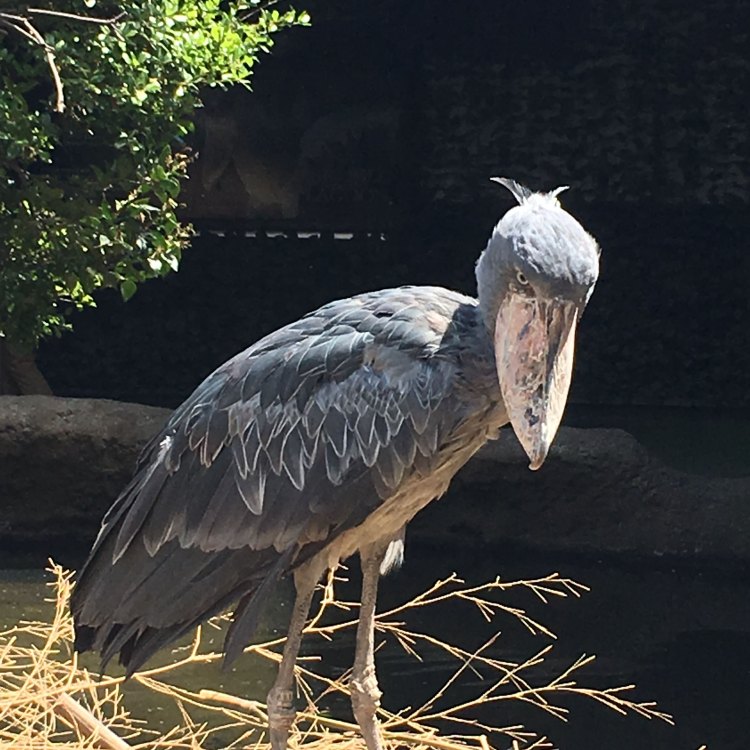
Shoebill Stork
- Adult Size: Large
- Average Lifespan: 25-35 years
- Reproduction: Monogamous
- Reproductive Behavior: Nests on the ground or in low trees, lays 1-3 eggs
- Sound or Call: Groans, clapping bill, and booming sounds
- Migration Pattern: None
- Social Groups: Solitary or found in small groups
- Behavior: Shy and elusive
- Threats: Habitat loss, hunting, and pollution
- Conservation Status: Vulnerable
- Impact on Ecosystem: Key predator in wetland ecosystems
- Human Use: Tourism and cultural significance
- Distinctive Features: Massive bill shaped like a shoe
- Interesting Facts: The shoebill stork is often referred to as a 'living fossil' due to its ancient lineage
- Predator: Humans, crocodiles, and large birds of prey
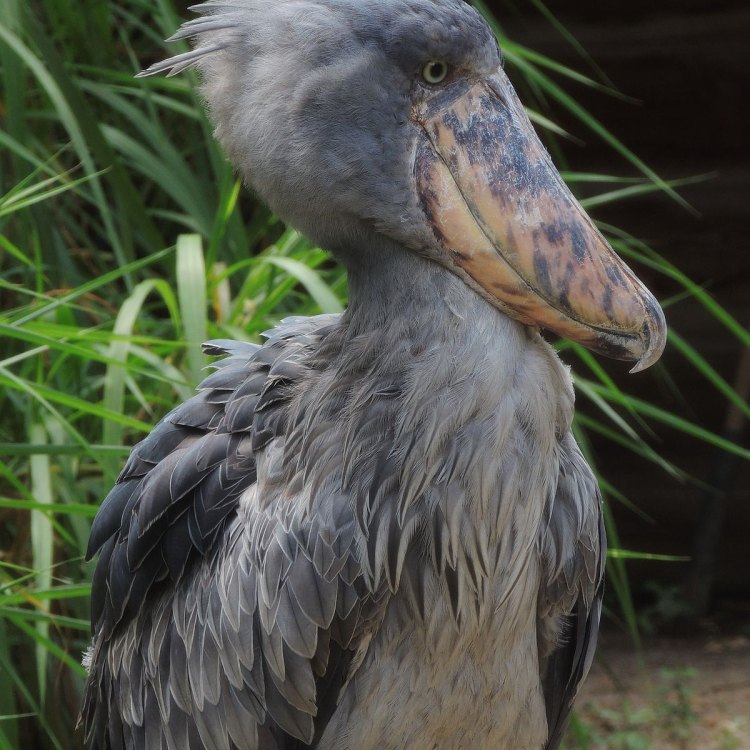
Balaeniceps rex
The Majestic Shoebill Stork: A 'Living Fossil' of Wetland Ecosystems
In the lush wetlands of central Africa, a mysterious bird with a unique appearance roams the waters silently. The shoebill stork, also known as the shoe-billed heron or whale-headed stork, is a fascinating bird with a distinct feature that sets it apart from all other avian species – its massive bill that resembles a shoe. This magnificent bird has captured the attention of researchers, conservationists, and bird enthusiasts alike, making it a subject of study and admiration.The shoebill stork, scientifically known as Balaeniceps rex, can grow to be up to five feet tall, making it one of the largest stork species in the world PeaceOfAnimals.Com. Its adult size is classified as 'large', with a wingspan of 8-9 feet. The weight of an average shoebill stork can range from 4.9 to 14.3 kilograms, making it a heavy bird in the avian world. The lifespan of this species is estimated to be 25-35 years, with some individuals living up to 50 years in captivity.
Reproduction and mating behavior of the shoebill stork are relatively well-documented, as they are monogamous birds. During the breeding season, which starts in late April and can last until August, shoebill storks build their nests on the ground or in low trees close to the water's edge. The female lays a clutch of 1-3 eggs, which are incubated for about 30-40 days. Once the chicks hatch, both parents take turns caring for them, providing them with small fish, frogs, and insects until they are ready to leave the nest Sulcata Tortoise.
One of the most distinctive characteristics of the shoebill stork is its vocalization. It is not a very vocal bird, but when it does vocalize, it emits a variety of noises, including groans, clapping bill, and booming sounds. These vocalizations are used to communicate between mates or as a form of territorial behavior.
Unlike many other bird species, the shoebill stork does not migrate. It is sedentary, meaning it stays in the same area throughout the year. However, during periods of drought, they may move to find suitable habitats with enough food and water.
In terms of social behavior, shoebill storks can be solitary or found in small groups of up to three individuals. They are generally shy and elusive birds, preferring to stay hidden in the tall grasses and reeds of the wetlands. Due to their elusive nature, not much is known about their social structure or behavior.
The shoebill stork faces several threats to its existence, primarily due to human activities. Habitat loss, hunting, and pollution are the main causes for their decline in populations. As humans continuously expand into the wetlands, these birds lose their natural habitats, making them vulnerable to extinction. They are also hunted for their large bills, which are used as ornaments and souvenirs. Pollution, such as the use of pesticides, can also affect their primary food source and the wetland ecosystems they inhabit.
According to the International Union for Conservation of Nature (IUCN), the shoebill stork is listed as 'Vulnerable' on the Red List of Threatened Species. It is estimated that there are only 5,000-8,000 individuals left in the wild. Conservation efforts include monitoring and protecting their habitats, educating local communities, and implementing sustainable ecotourism to provide alternative sources of income for the locals.
The shoebill stork's impact on the ecosystem is significant, as it plays a crucial role as a top predator in the wetland ecosystems. These birds feed on a variety of fish, frogs, and even small reptiles, keeping their populations in check. They also help reduce disease transmission by consuming sick and dying animals. As a result, their presence is essential in maintaining the balance and health of wetland ecosystems.
Apart from its ecological importance, the shoebill stork also holds cultural significance for the locals. In some African cultures, these birds are considered sacred and are protected by traditional laws. They are also featured in many traditional stories and beliefs, making them an essential part of the local heritage.
The shoebill stork's most distinctive feature is undoubtedly its massive bill, which can reach up to 10 inches in length. This bill is not only used for catching and consuming prey, but it also serves as a means of communication, intimidation, and defense. The bill is equipped with sharp edges that can easily slice through fish and other prey. It can also clap its bill together to produce a loud noise that can scare away predators or mark its territory. The bill is also used for courtship displays, where the male and female will snap their bills together in a synchronized manner.
Apart from its massive bill, there are many other interesting facts about the shoebill stork. The scientific name, Balaeniceps rex, means 'whale-head king', describing its large size and distinct head shape. Additionally, the shoebill stork is often referred to as a 'living fossil' due to its ancient lineage. Fossil records have shown that this bird has remained relatively unchanged for at least 15 million years, making it an evolutionary marvel.
Like any other species, shoebill storks have their share of predators. Humans are their biggest threat, as mentioned earlier, but they can also fall prey to crocodiles and large birds of prey, such as eagles and vultures.
In recent years, the shoebill stork has gained popularity among birdwatchers and tourists alike. Many national parks and wetland areas offer guided tours that allow visitors to observe these majestic birds in their natural habitats. It is truly a once-in-a-lifetime experience to witness these 'living fossils' up close and see their incredible features and behaviors.
In conclusion, the shoebill stork is a remarkable bird with unique features and behavior that make it stand out among other avian species. Its massive bill, monogamous breeding behavior, vocalizations, and role as a key predator in wetland ecosystems are all attributes that make it a fascinating subject of study. However, the shoebill stork's future remains uncertain as it faces numerous threats in its natural habitats. It is our responsibility to ensure its survival for future generations to appreciate and admire the beauty of this 'living fossil.'
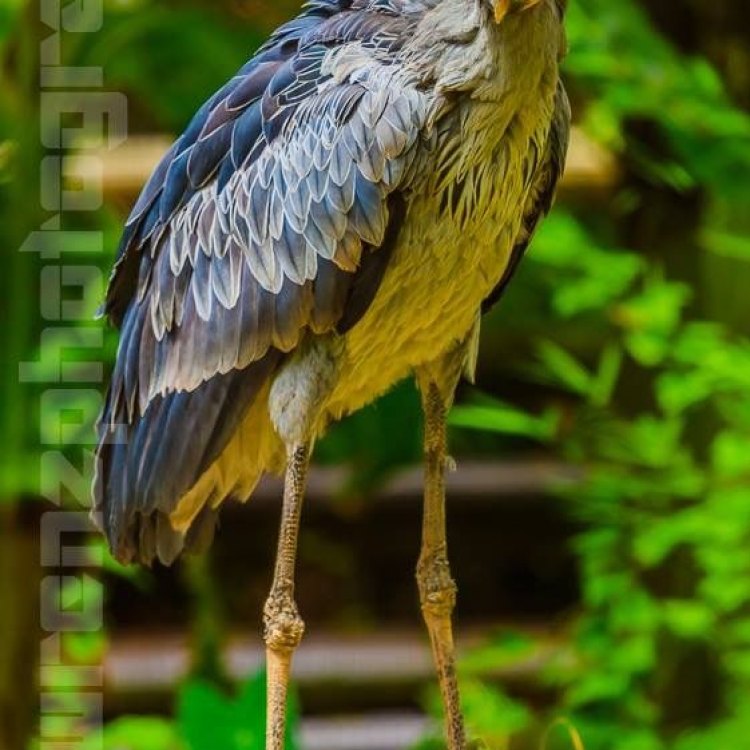
The Majestic Shoebill Stork: A Rare and Enigmatic Bird of Eastern Africa
Disclaimer: The content provided is for informational purposes only. We cannot guarantee the accuracy of the information on this page 100%. All information provided here may change without prior notice.

